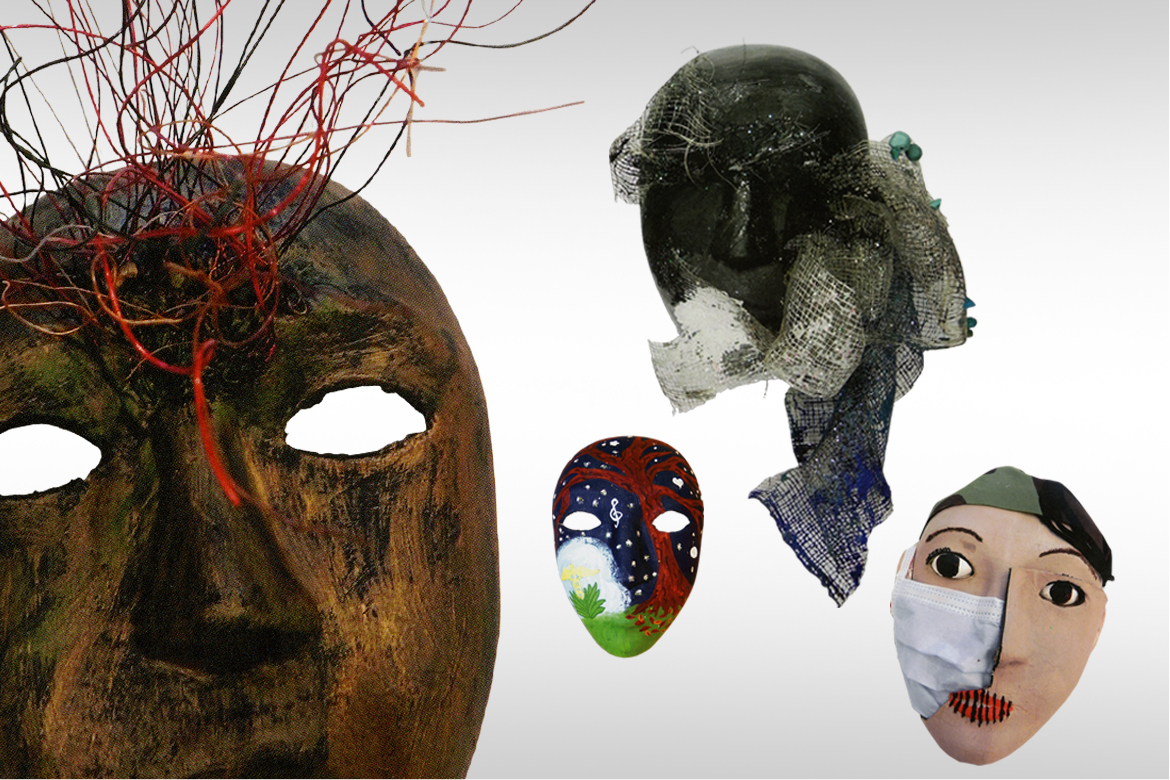At a military medical school in Maryland, one physician professor is using art to give students time for self-exploration. Through the making of masks, students explore the ultimate question: Who am I?
Medicine is both science and art. And for three years now at the Uniformed Services University of the Health Sciences (USU), medical students, at a particular phase in the curriculum when they are at high risk for burnout, have taken part in a collaborative mask-making exercise to promote self-exploration and personal identity formation.
The university’s curriculum is a bit different than that of other medical schools. After 18 months of preclerkship, 12 months of clerkship, and a two-month study block for Step 1, students begin the mask-making exercise.
Students are given blank masks and little direction other than examples of previous USU students and military service members who have gone through the art therapy program at the National Intrepid Center of Excellence (NICoE). “We don’t want to tell them what should go on their masks,” said Mark Stephens, MD, a family physician and professor of family medicine at USU in Bethesda, Md. “That’s not our place, that is theirs…. As we frame the activity, we are very nonspecific in terms of giving them ample personal creative space.”
“Most students choose to put something on the outside [of the mask], and most of the time it’s an explorative narrative of the mask that they present to the world,” he said. But some students draw and paint on the inside of the masks as well.
“There are two canvases there for students to create a mask,” he said. “What do we present to the outside world? That’s what a lot of people say is the outer part of the mask. For the students who have chosen to draw on the inside, the theme that I see the most is insecurity.”
At the time of the activity, “we have our own internal burnout data suggesting that a fair amount of them are emotionally exhausted, have a fair amount of depersonalization and a relatively low sense of personal accomplishment—the three domains of burnout,” Dr. Stephens said.
“Just like you need to know the narrative of the patient to take optimal care of them, you need to know the narrative of self-identity to be true to self in the context of patient care,” he said. “If you bury your true sense of self long enough, there’s some real danger for both the individual and the patient.”
“I see the mask making as very complementary in what I would call a self-narrative,” Dr. Stephens said. “I’m a big believer in the central importance of professional identity formation on the journey of becoming a physician.”
“The mask making, for me, has been a wonderful journey of self-exploration and identity formation for our students,” he said. “I feel like, in many ways, medical education sets up situations where people are forced to put elements of themselves to the side or ignore them—whether that’s an ethical conflict or feeling your way through failure.”
How the mask-making exercise began
Art therapy at NICoE on the Walter Reed National Military Medical Center campus in Bethesda is part of a comprehensive and integrative treatment program for active duty service members with traumatic brain injury and underlying psychological health conditions.
One day, Dr. Stephens was visiting NICoE’s art therapy studio when he met Melissa Walker, an art therapist who has worked with over one thousand active duty service members to create masks that are “magnificent works of art,” Dr. Stephens said.
“There was a real connection,” he said, “in terms of the role of mask making in identity and self-exploration for our medical students.”
Dr. Stephens and Ms. Walker collaborated to develop the mask-making exercise for USU medical students. From that partnership was born an activity that is now spreading to several other institutions in the context of self-exploration and professional identity formation.
Working with collaborators such as Karlen Bader, in the department of family medicine, Lara Varpio, MD, in the department of internal medicine, and recently graduated senior medical students Sara Wilson, MD, and Kimera Joseph, MD, the team performed an extensive qualitative analysis on a subset of the student masks.
Some of the themes identified are disturbing or haunting. They often depict a sense of identity conflict, numbness, emptiness or hollowness. It is important to recognize and externalize those feelings in order to deal with or overcome them, Dr. Stephens said. Students tend to bury or ignore those feelings.
"In this context, the broader the space between true and projected self, the more identity dissonance or role confusion there is going to be," Dr. Stephens said. "I see that as having real implications for patient care."
Medical students at a school like USU have to play multiple roles. They are not only medical students, they are also military officers. “The question is,” he said, “are the students of the uniformed services the same as other medical students?”
Through a partnership with Penn State University and the University of California, Irvine, Dr. Stephens hopes to find an answer. “We’re going to look at a series of students over time,” he said, “because what we think is students who enter the door are different than students heading out for their first clinical clerkship who are different than students who are ready to graduate…. Phases of identity formation on the professional continuum are iterative.”
Watch AMA Wire® in the coming weeks for the second part of a series on the arts and humanities in medical school, featuring Michael Green, MD, of Penn State University, who has developed the course, “Comics in Medicine.” In the course, fourth year medical students examine their clinical experiences through long-form graphic narratives.





